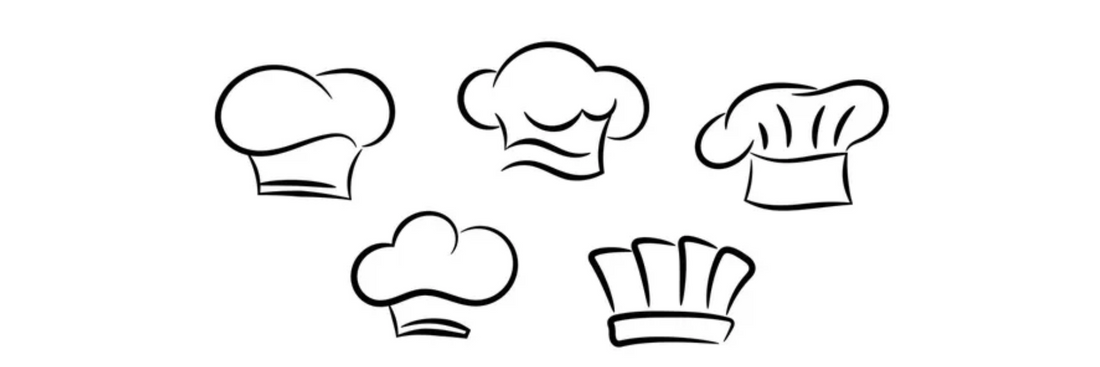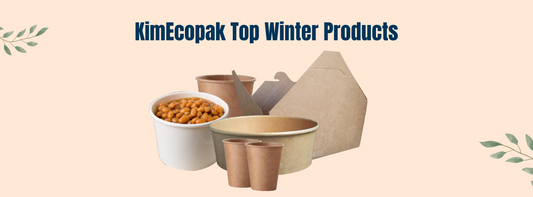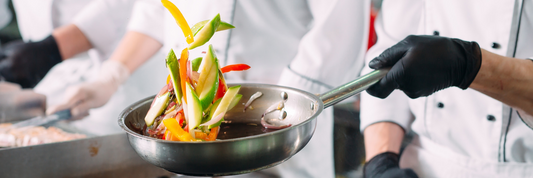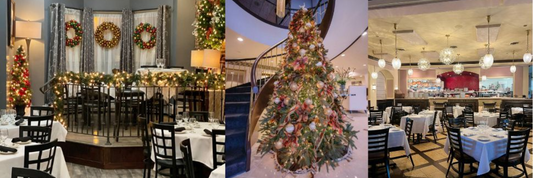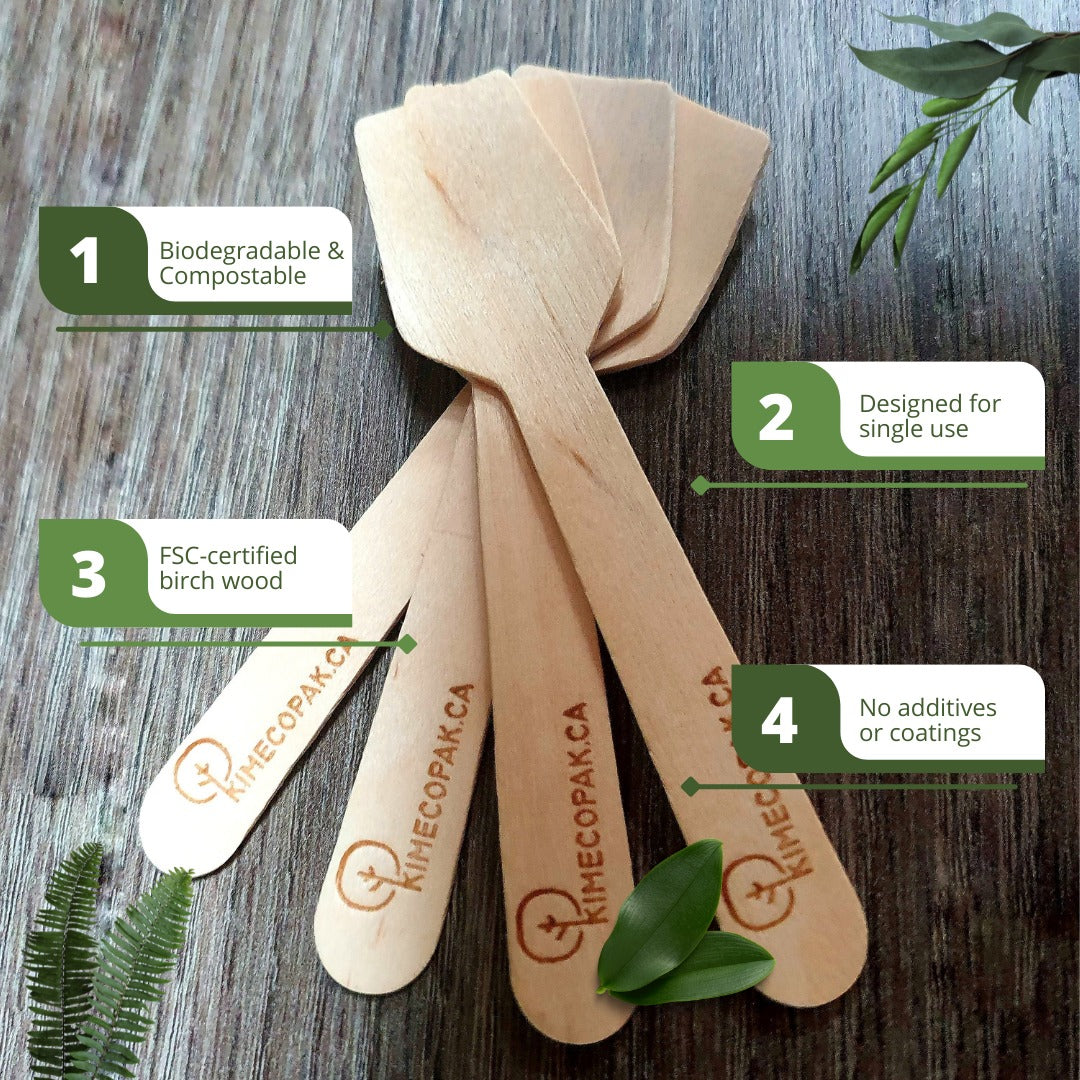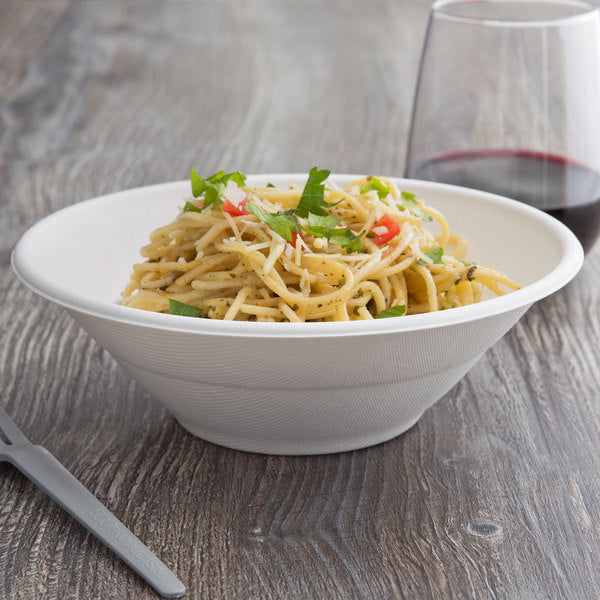The chef hat, often known as the toque blanche, is an iconic symbol of culinary professionals around the world. More than just a fashion statement, the chef hat represents a rich history and tradition in the culinary arts. This article delves into the history of the chef hat, explores various types, and explains the significance behind its design.
Chef Hat History
One legend states that after discovering hair in his soup one day, King Henry VIII ordered his cook and other food prep workers to cover their heads.
The 18th-century French pastry chef Marie Antoine-Carême is credited with popularizing the white toque hat in culinary tradition. But it wasn't until renowned French chef Aguste Escoffier developed a sophisticated style for skilled cooks, which featured the tall, white, pleated toque hat. Escoffier maintained that chefs ought to dress in formal attire, which included hats of various lengths to denote status and make positions within the kitchen brigade obvious.
Types of Chef Hats
Toque Hat
The toque hat, or toque blanche, is the most traditional chef hat. It is tall, cylindrical, and often pleated. The toque is made from lightweight, breathable fabric, and its height and number of pleats are believed to signify a chef’s level of experience and skill.
A toque chef hat is popularly used in upscale restaurants, catered events, and hotels to show a high-end, professional look. It is available in cotton, polyester, and poly-cotton blend materials. Top chef hat is typically fastened with an adjustable self-fastening band to fit various head sizes.

Chef Skull Cap
The chef skull cap (also called pill box cap) is a modern and practical alternative to the traditional toque. It fits snugly on the head, keeping hair out of the face and maintaining a hygienic environment in the kitchen.
It is a popular choice for bakers, pastry chefs, and line cooks. Skull caps are usually made of cotton or polyester and come in various colors. Typically features an elastic band on the back to fit a variety of head sizes

Chef Beanie
The chef beanie is similar to the skull cap but features a slightly looser fit. It provides a comfortable and casual look while still adhering to kitchen hygiene standards. Beanies are often made from breathable, moisture-wicking materials.
It is suitable for line cooks, food prep cooks, and outdoor kitchens. Typically features an adjustable self-fastening or elastic band on the back to fit various head sizes.
Baseball Cap
Some chefs prefer to wear baseball caps, especially in less formal kitchens. These caps offer a sporty look and provide good coverage to keep hair contained. They are usually adjustable and can feature the logo of the restaurant or establishment.
Baseball caps are ideal for quick-serve restaurants, fast-food restaurants, and food truck operators. It is available in cotton, polyester, and poly-cotton blend materials. It features a hook-and-loop back closure to fit various head sizes.
Chef Beret
The chef beret is a stylish and unique option, similar to the European style of the toque chef hat, but with less body to it. It offers a relaxed fit and a touch of personality, often favored by chefs in more casual or artistic culinary environments. Berets can be made from various materials, including cotton, wool, and synthetic blends.
Chef beret is a common choice for modern and upscale restaurants and cafes. It has an adjustable strap to fit various head sizes.
Chef Bandana
The chef bandana is a versatile and practical headwear option. It can be tied in different styles and provides excellent coverage for keeping hair in place. Bandanas are often made from lightweight, breathable fabric and come in various patterns and colors. It is commonly used in modern and casual restaurants, cafes, and food trucks. Cheft bandana is available in cotton, polyester, and poly-cotton blend materials

Chef Headwrap
Chef headwraps are similar to bandanas but provide more coverage. They are often tied at the back and cover the entire head, making them ideal for long hours in the kitchen. Headwraps are made from moisture-wicking materials to keep the chef cool and comfortable. Quick-serve restaurants, fast food, and food trucks usually use this type of chef hat.
Chef Headband
A chef headband is a minimalist option that keeps hair back while allowing for maximum airflow. Headbands are usually made from elastic materials and are easy to wear and remove. They are ideal for chefs who prefer a simple, functional accessory. It is a popular choice for quick-serve restaurants, fast food, and outdoor kitchens.

Chef Visor
The chef visor is another practical choice, offering good airflow and protection from sweat. Visors keep hair out of the face and provide shade from kitchen lights. They are adjustable and come in various styles and colors. It is popular used in quick-serve restaurants, fast food, and outdoor kitchens.

Why Do Chefs Wear Hats?
Chefs wear hats primarily for hygiene reasons. Hats keep hair contained and prevent it from falling into the food. They also absorb sweat and help maintain a clean, professional appearance in the kitchen. Additionally, chef hats symbolize the chef’s rank and expertise, promoting a sense of order and hierarchy in the kitchen.
Why Do Chefs Wear Tall Hats?
Tall hats, particularly the traditional toque, are worn by chefs to signify their status and experience. The height of the hat can denote the chef's rank, with the head chef typically wearing the tallest hat. The tall design also allows for better airflow, keeping the chef’s head cool in a hot kitchen environment.
What Do the Pleats In a Chef Hat Stand For?
The pleats in a chef hat are said to represent the number of ways a chef can prepare an egg. Traditionally, a toque would have 100 pleats, symbolizing the chef's mastery of 100 different egg dishes. This tradition highlights the chef’s versatility and skill in the kitchen.
Conclusion
The chef hat is much more than a simple piece of headwear. It carries a rich history, symbolizes culinary expertise, and plays a crucial role in maintaining hygiene in the kitchen. From traditional toques to modern skull caps and bandanas, the variety of chef hats available today allows chefs to choose the style that best suits their needs and personality. Understanding the significance and options of chef hats provides a deeper appreciation for this iconic symbol of the culinary world.

